

 The woods, blending well into the deep valley, are welcoming on this day. Edged against the great river, a short distance from the main road, and yet well hidden, lies the Medieval Forest. An emerging area dedicated to the preservation of history, culture, and traditional skills. A way to step back into time, learn authentic crafting and become more aware of nature and personal strength.
The woods, blending well into the deep valley, are welcoming on this day. Edged against the great river, a short distance from the main road, and yet well hidden, lies the Medieval Forest. An emerging area dedicated to the preservation of history, culture, and traditional skills. A way to step back into time, learn authentic crafting and become more aware of nature and personal strength.
It is here that I meet up with Kjell and Maj-Lis for a glimpse inside the eating habits of the Vikings. The husband and wife team are passionate about their country’s history and the area of Numedal. Every year, during July, they, and other enthusiasts, put on a week-long festival featuring local music, courses on textiles, leather, blacksmithing, archery (to name a few) and other festivities centered around the Middle Ages / Viking Age. The week’s festivities held in Stave churches and historical buildings, among other places, create an atmosphere true to Norway’s history for all ages and all types of interests. It’s an opportunity to step back into time – and even ride in a copy of a Viking ship from 850AD.
The valley, known as Numedal, is a glimpse into life during the Middle Ages. A place to experience how Norwegians once lived. Today, Numedal has named itself the Medieval Valley of Norway (Middelalderdalen). They can safely make such a proclamation because within the valley lies the largest remaining collection of houses and buildings older than 1537 AD. In Rollag, Nore og Uvdal municipalities, there are between 50-60 buildings including 4 stave churches, dating back to the 1100s. The predominance of so many medieval buildings still intact may be due, in part, to the wealth local people gained from the extraction of iron. They could then afford such high quality materials and craftsmen to build enduring structures. The valley has also acted as a pathway and crossroads for trading between the east and west for as far back as one could imagine. Knowledge, culture, religious beliefs and other outside influences most likely came through this area because of this important pathway. It also offered locals a way to barter and trade for what they could not produce.
And so here we are today, meeting at a crossroads, to delve into Norway’s past. Kjell starts a fire in-between the stone walls of the hand built oven. The dough has finished rising and a locally-caught trout lies on a wooden plank near the fire pit. We are making a small feast of plankefisk (plank fish) and rugbrød (rye bread with barley grains). Kjell is also showing me a fun way to cook eggs over an open fire. (more…)
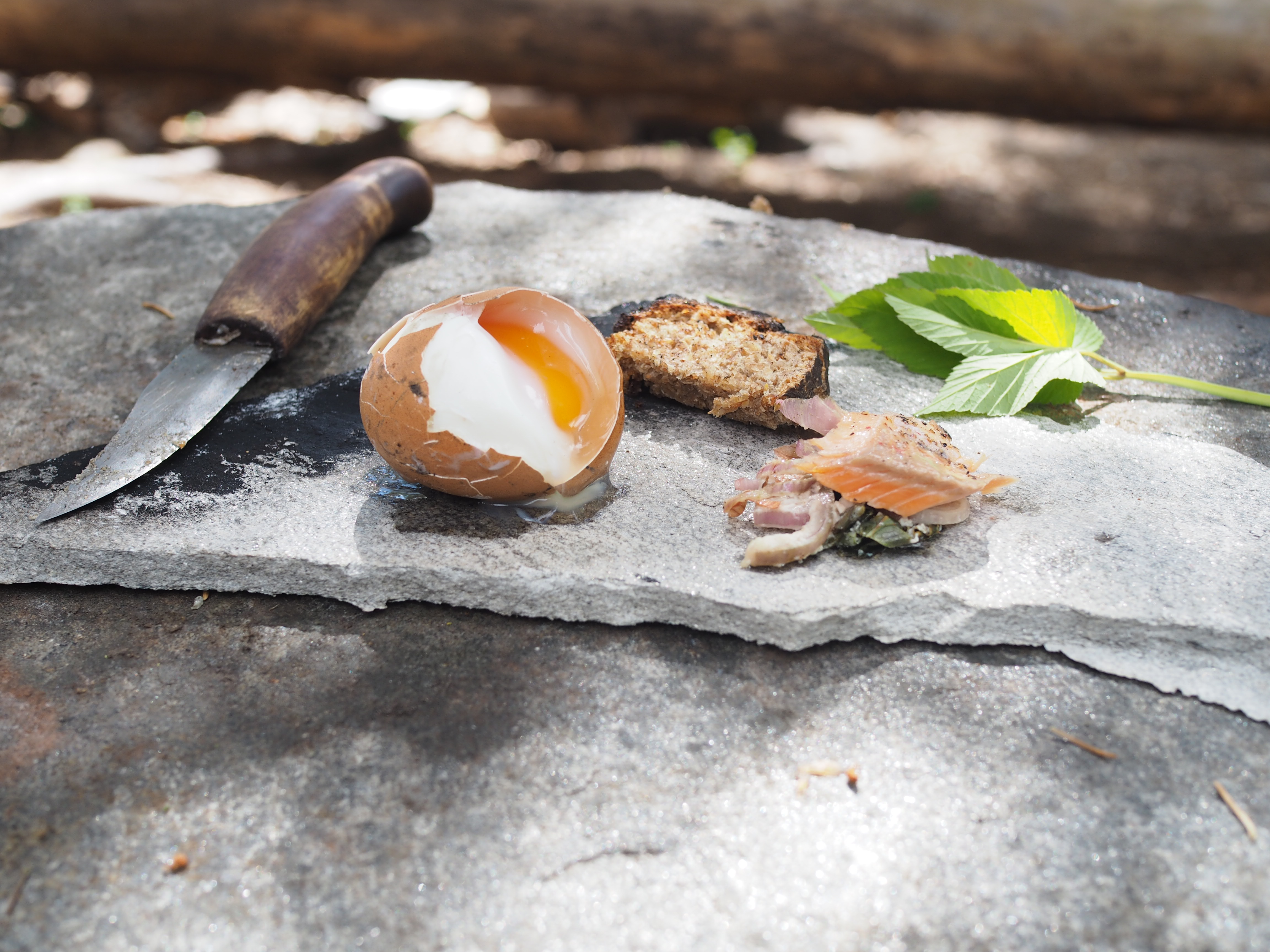


 Sankthans, or Midsummer, is a celebration of both folklore and Christianity in Norway and across Scandinavia. An old tradition of celebrating the summer solstice which then blended into a newer tradition of commemorating the birth of John the Baptist. While in Norway the name still reflects the Christian view of the day (St Hans), it is the non-Christian elements, such as the midsummer bonfire, which has held fast over the years. And while less and less Norwegians celebrate this day, it still is seen as a welcome to the arrival of summer.
Sankthans, or Midsummer, is a celebration of both folklore and Christianity in Norway and across Scandinavia. An old tradition of celebrating the summer solstice which then blended into a newer tradition of commemorating the birth of John the Baptist. While in Norway the name still reflects the Christian view of the day (St Hans), it is the non-Christian elements, such as the midsummer bonfire, which has held fast over the years. And while less and less Norwegians celebrate this day, it still is seen as a welcome to the arrival of summer.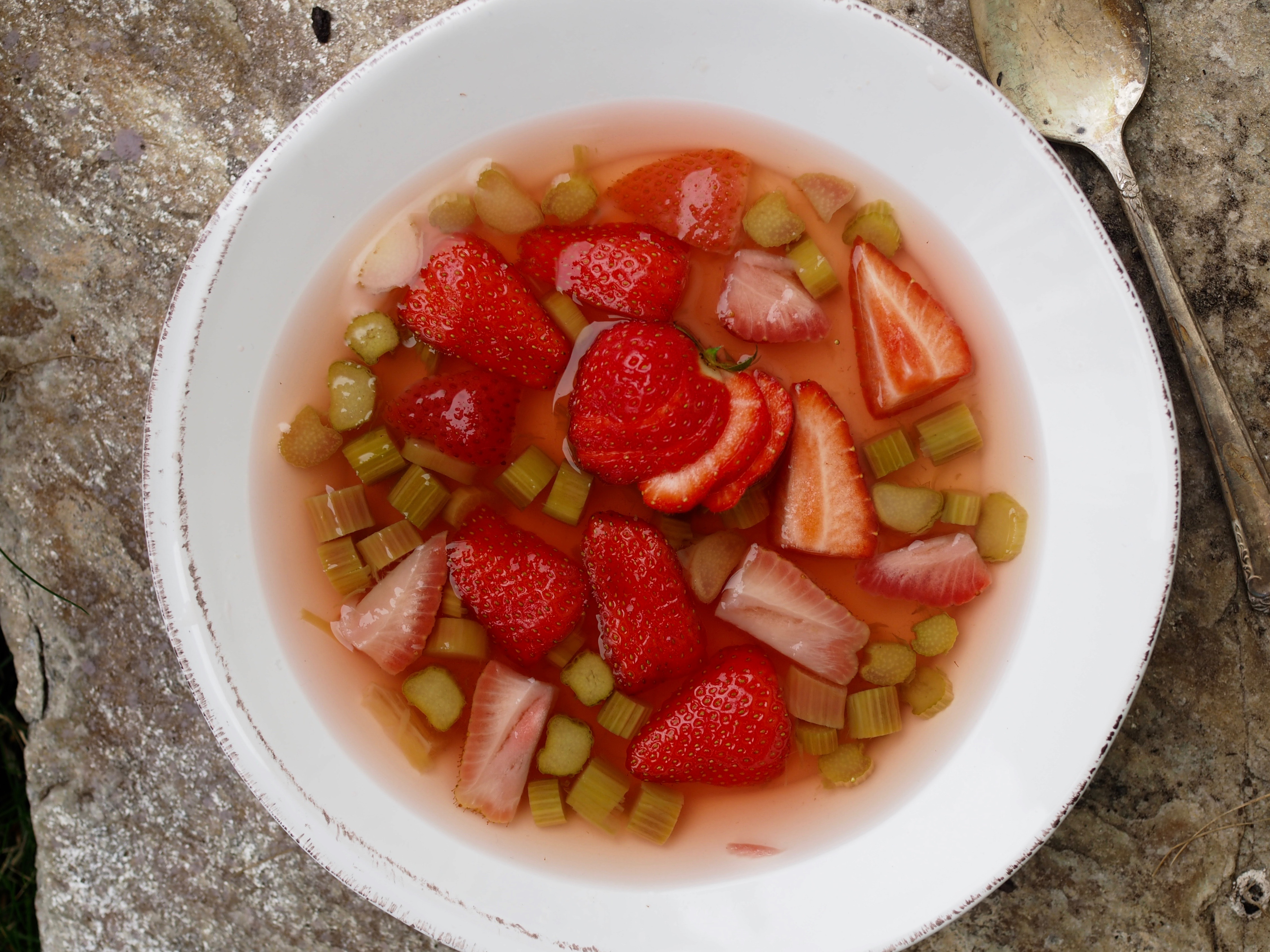
 Today is the longest day of the year for those living north of the equator. The summer solstice. A day when the sun seems to stand still; when the earth is actually farthest away from the sun. It arrives just days prior to the celebration of Sankthans in Norway, or Midsummer. And this year, there will also be a full moon, making it quite a special occurrence.
Today is the longest day of the year for those living north of the equator. The summer solstice. A day when the sun seems to stand still; when the earth is actually farthest away from the sun. It arrives just days prior to the celebration of Sankthans in Norway, or Midsummer. And this year, there will also be a full moon, making it quite a special occurrence.

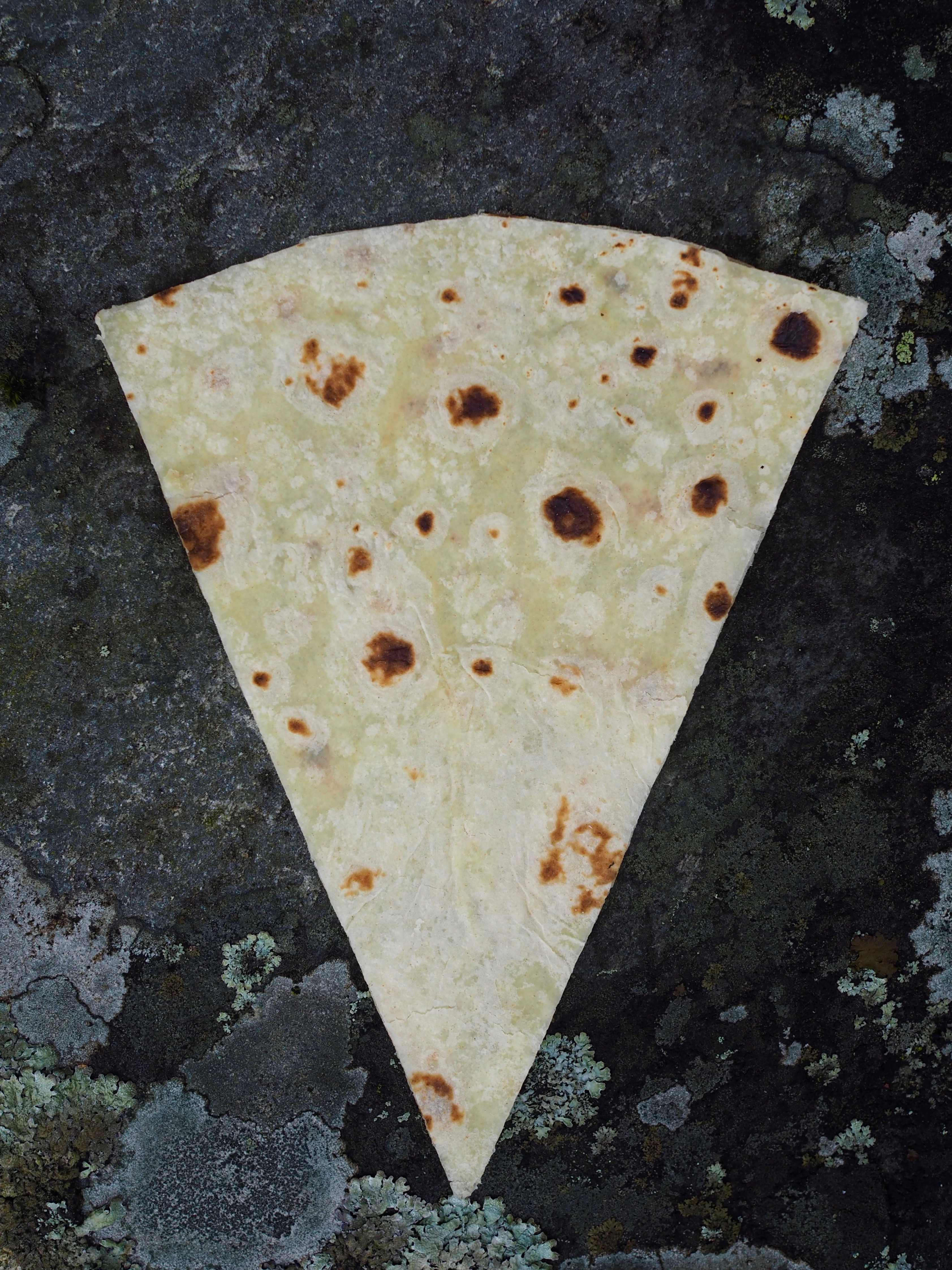

 My second visit to
My second visit to 

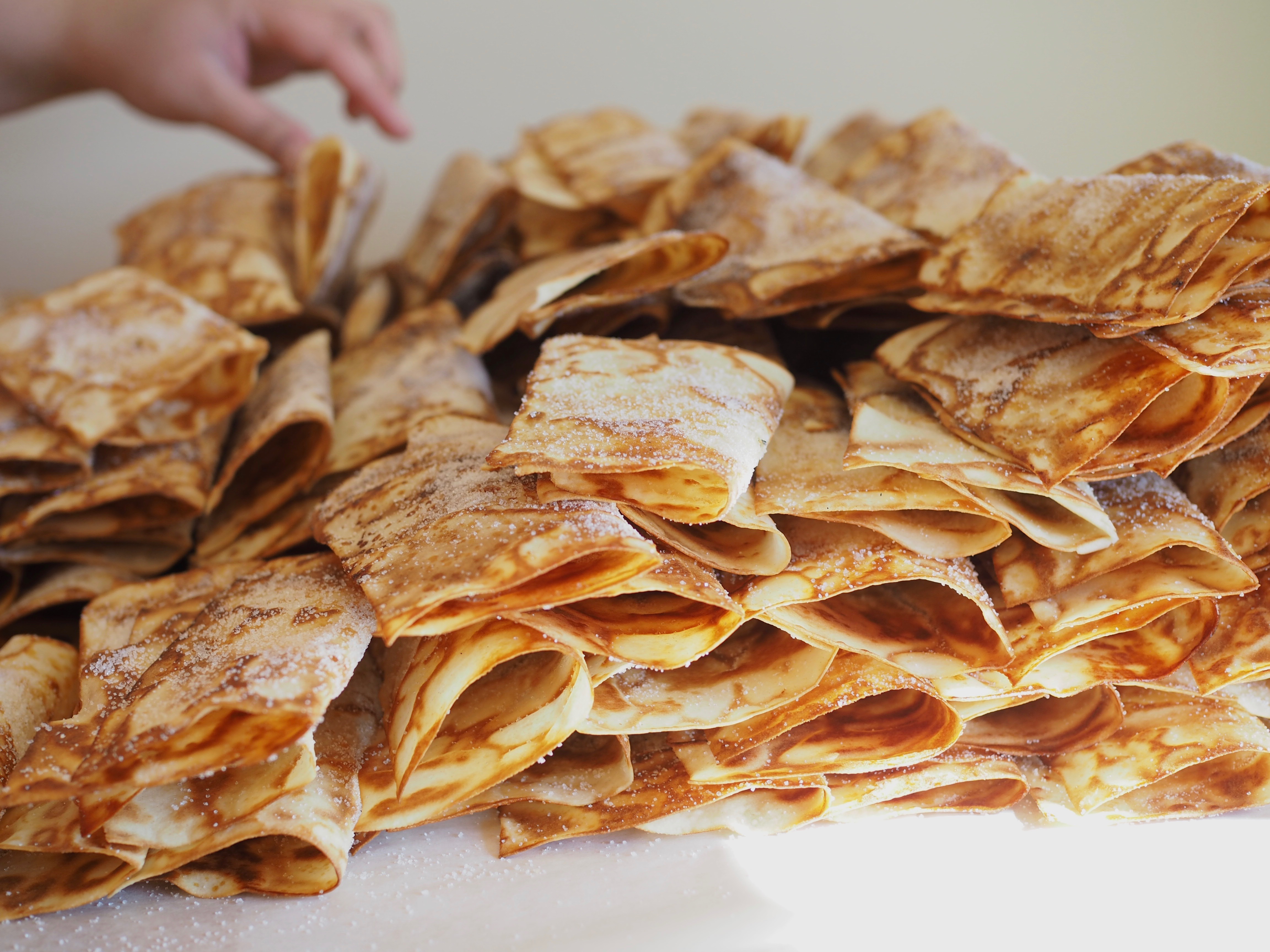

 It’s 9.00am when I pass through the open doors of the old barn, overlooking a valley carving its way through the mountainous terrain of Uvdal, Norway. The sun peaks through the grey clouds which have left morning dew on the yellow flowers popping around the well-worn farm. There is a cool breeze, which is welcome in the Uvdalsleiven kitchen, where the takke (griddle) reigns as it exerts its heat in every corner of the room. It’s temperamental. The colder it is inside, the higher its temperature must be. The hotter it is, the lower its temperature. And so it is with the takke, the surroundings effecting it in a way that only an experienced baker can instinctively master. Like a barista, the baker must constantly be in control and make adjusts to produce a quality product. And here at Uvdalsleiven, you can immediately see the symbiotic relationship which creates so much harmony in the kitchen.
It’s 9.00am when I pass through the open doors of the old barn, overlooking a valley carving its way through the mountainous terrain of Uvdal, Norway. The sun peaks through the grey clouds which have left morning dew on the yellow flowers popping around the well-worn farm. There is a cool breeze, which is welcome in the Uvdalsleiven kitchen, where the takke (griddle) reigns as it exerts its heat in every corner of the room. It’s temperamental. The colder it is inside, the higher its temperature must be. The hotter it is, the lower its temperature. And so it is with the takke, the surroundings effecting it in a way that only an experienced baker can instinctively master. Like a barista, the baker must constantly be in control and make adjusts to produce a quality product. And here at Uvdalsleiven, you can immediately see the symbiotic relationship which creates so much harmony in the kitchen. 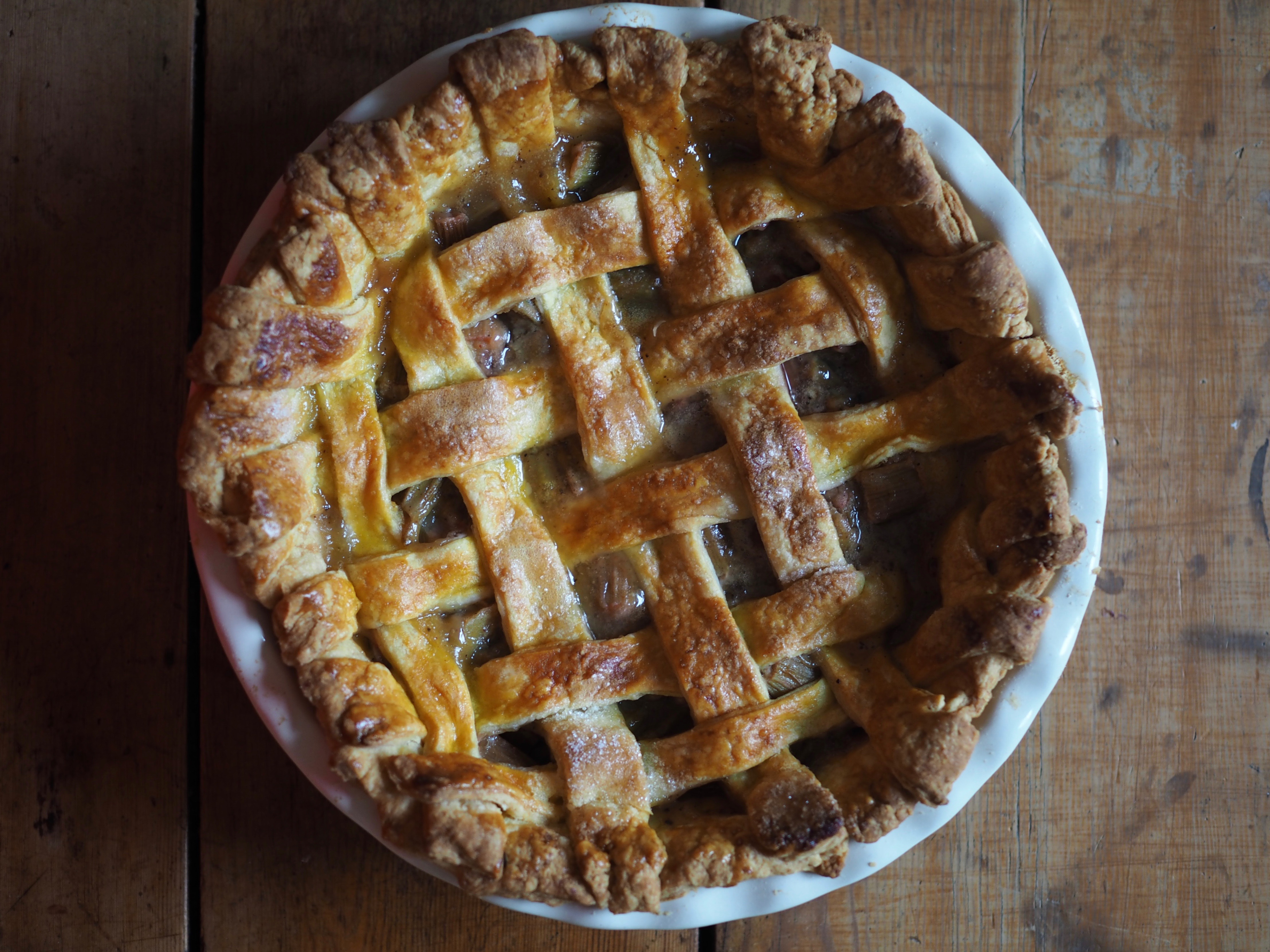
 Nearby an old rock wall, sturdy but aged and covered with greenery, lies a handful of rhubarb plants. I like to imagine these were purposefully planted so many years ago on our farm when the original house stood on the very hill which those old stones continue to hold up. A house garden, perhaps, providing the old house with a wonderful supply of this springtime favorite. I discovered them intermixed with an overgrowth of nettles and ferns last year when we first moved to the farm. And while preparing the area this spring, I discovered the rhubarb plants were many and even found a couple of berry bushes nestled in front of the stones as well.
Nearby an old rock wall, sturdy but aged and covered with greenery, lies a handful of rhubarb plants. I like to imagine these were purposefully planted so many years ago on our farm when the original house stood on the very hill which those old stones continue to hold up. A house garden, perhaps, providing the old house with a wonderful supply of this springtime favorite. I discovered them intermixed with an overgrowth of nettles and ferns last year when we first moved to the farm. And while preparing the area this spring, I discovered the rhubarb plants were many and even found a couple of berry bushes nestled in front of the stones as well.
